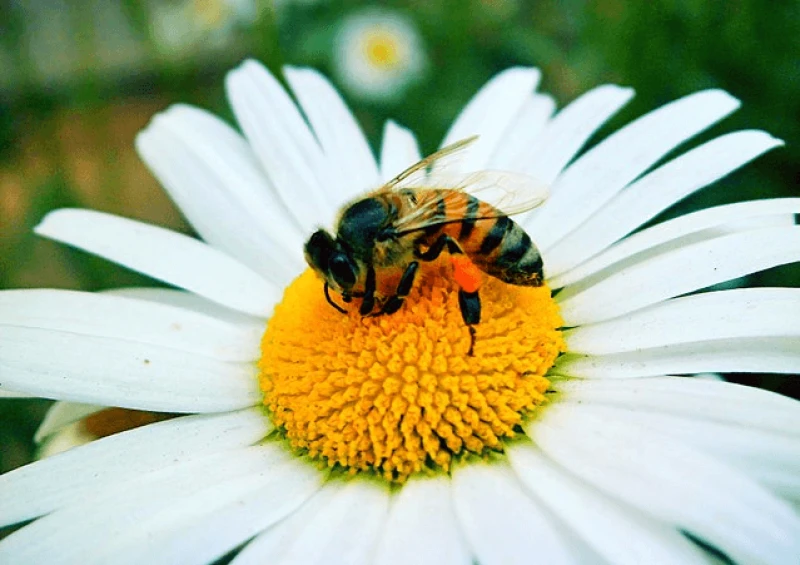EU-banned neonicotinoid sulfoxaflor does not harm bumblebees, concludes field-realistic independent British university study
EU-banned neonicotinoid sulfoxaflor does not harm bumblebees, concludes field-realistic independent British university study


A pesticide banned for outdoor use by the EU could be less harmful to bees than had been thought. This is the conclusion of a study that exposed bumblebee colonies to sulfoxaflor, an insecticide approved in the EU in 2015 but banned for outdoor use in April 2022.
The new study, carried out at the University of Reading and Royal Holloway, tested the effects of field-realistic levels of sulfoxaflor in the presence of a common bee parasite, Crithidia bombi, on the buff-tailed bumblebee, Bombus terrestris. The parasite gave the bees an extra challenge, to try to replicate the multiple stressors pollinators often face in the wild.
The finding that sulfoxaflor had no impact on bumblebee colonies or the pollination of bean flowers, enclosed so that only the study bumblebees could visit them, runs counter to comparable studies on neonicotinoids, also carried out at the University of Reading.
‘This changes our understanding of how sulfoxaflor impacts bee reproduction and pollination, and means it is less harmful than the neonicotinoids,’ says Edward Straw, a bee ecologist at Trinity College Dublin who carried out the research. However, he stresses that this only holds true for the conditions that were tested.
This is an excerpt. Read the original post here

 | Videos | More... |

Video: Nuclear energy will destroy us? Global warming is an existential threat? Chemicals are massacring bees? Donate to the Green Industrial Complex!
 | Bees & Pollinators | More... |

GLP podcast: Science journalism is a mess. Here’s how to fix it

Mosquito massacre: Can we safely tackle malaria with a CRISPR gene drive?

Are we facing an ‘Insect Apocalypse’ caused by ‘intensive, industrial’ farming and agricultural chemicals? The media say yes; Science says ‘no’
 | Infographics | More... |

Infographic: Global regulatory and health research agencies on whether glyphosate causes cancer
 | GMO FAQs | More... |

Why is there controversy over GMO foods but not GMO drugs?

How are GMOs labeled around the world?

How does genetic engineering differ from conventional breeding?
 | GLP Profiles | More... |

Alex Jones: Right-wing conspiracy theorist stokes fear of GMOs, pesticides to sell ‘health supplements’




 Viewpoint — Fact checking MAHA mythmakers: How wellness influencers and RFK, Jr. undermine American science and health
Viewpoint — Fact checking MAHA mythmakers: How wellness influencers and RFK, Jr. undermine American science and health Viewpoint: Video — Big Solar is gobbling up productive agricultural land and hurting farmers yet providing little energy or sustainabilty gains
Viewpoint: Video — Big Solar is gobbling up productive agricultural land and hurting farmers yet providing little energy or sustainabilty gains Fighting deforestation with CO2: Biotechnology breakthrough creates sustainable palm oil alternative for cosmetics
Fighting deforestation with CO2: Biotechnology breakthrough creates sustainable palm oil alternative for cosmetics Trust issues: What happens when therapists use ChatGPT?
Trust issues: What happens when therapists use ChatGPT? 30-year-old tomato line shows genetic resistance to devastating virus
30-year-old tomato line shows genetic resistance to devastating virus California, Washington, Oregon forge immunization alliance to safeguard vaccine access against federal undermining
California, Washington, Oregon forge immunization alliance to safeguard vaccine access against federal undermining The free-range chicken dilemma: Better for birds, but with substantial costs
The free-range chicken dilemma: Better for birds, but with substantial costs ‘You have to treat the brain first’: Rethinking chronic pain with Sanjay Gupta
‘You have to treat the brain first’: Rethinking chronic pain with Sanjay Gupta
